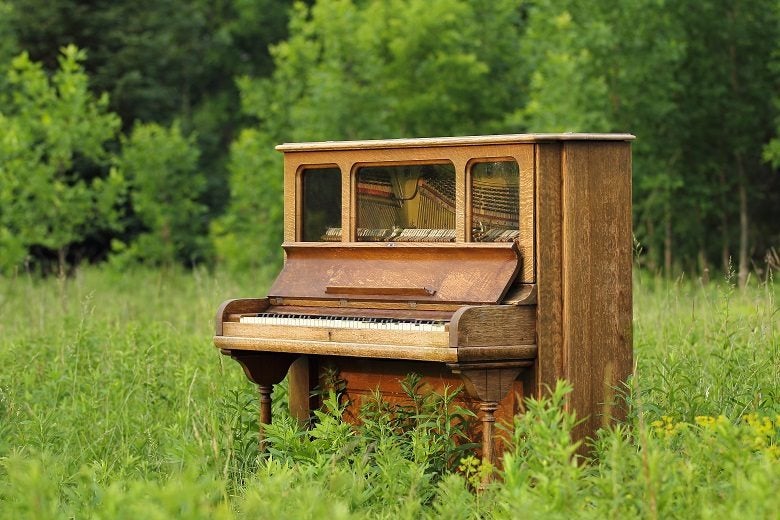Moving a Piano
Whether it’s an heirloom you simply can’t be parted with or if you’re raising a little Mozart and want them to keep on practising their scales after you move, don’t do anything with that piano before you read this first. A piano is not only large, impressive and expensive, but it’s an extremely awkward shape with an inconveniently uneven distribution of weight. Taking your piano abroad with you, therefore, is tantamount to relocating a large, heavy and somewhat temperamental animal. Your piano has very precise dynamics and delicate internal moving parts. It may even need a climate-controlled environment in transit if you’re moving between extreme climates. Do not, whatever you do, fail to acknowledge these details before you add the piano to the packing list. And don’t simply hire in a handful of weightlifters to get the thing out of the building – this is an exquisite piece of craftsmanship, not a chest of drawers!
Finding a removals expert
- Search online for a dedicated piano removals expert who can help you get the piano out of the house and into a removals lorry
- Alternatively, compare customer reviews of a few general removals agencies. Look for comments on their personnel’s general conscientiousness if you can’t find specific comments on piano removals
- Ask your removals company how much experience they have in packing and shipping pianos
- Ask about insurance coverage and any chargeable excesses
- Find out whether they provide door to door pickup and delivery options – this is highly recommended if you can’t employ a dedicated piano removals expert to do this
- Work out whether your piano needs a climate controlled environment in transit and / or in storage

Preparing the way
- Now, this sounds obvious, but make sure there’s actually enough room for the piano in your new home. Decide where it’s going before it gets there. Are you moving for good? If not, see if you can park it with a friend or keep it in storage for the time being
- Wrap the piano with blankets and pads to avoid transit damage like scratches and dings. This will also protect your paintwork from scrapes and dents while it’s being manoeuvred out of the house. Plastic wrap is another additional option, especially if the piano may be exposed to precipitation at some stage in the move
- Make sure all internal moving parts are secured
- Don’t worry about the keys – that narrow wooden rail on the key frame will prevent them from falling off or becoming lost in the move
- Close and lock the lid. Double check that it’s locked. If the lid doesn’t lock, just be sure that it’s shut properly before you wrap the piano up in packing material and blankets. Don’t use any kind of fixing tape to do this as it can damage the wood
- If you’re not using professionals to move the piano, look into renting all the kit you’ll need – a furniture dolly and some heavy-duty straps should be top of your list. You’ll also need at least four strong and sensible friends, depending on the size and weight of your piano
Select the size of your move to get free quotes
Getting it out of the building
Most removals companies will only remotely consider moving your piano if it’s on a ground floor, or maybe up just one flight of stairs if you’re lucky. If you live in an apartment building, that freight lift is about to come in very handy. But if your removals personnel must take the stairs, the piano will be loaded onto a board before it is slid, very carefully, downstairs. If your piano is on the ground floor it will be placed on a wheeled device called a furniture dolly and rolled out of the building and into the lorry. Once in the vehicle, the piano should be positioned at the very back, so this should be loaded first before any other furniture. Use planks to level out the flooring if necessary as this will relieve the pressure taken on by the piano’s casters or legs during the potentially bumpy ride.
And if it’s a grand piano…
It’ll need some dismantling before it goes anywhere, and it can even be slid down a staircase on its narrowest straight side if you remove the lid and pedal lyre first. Legs will also need to come off temporarily, so what you’re left with is a large shape that’s thin enough to manoeuvre through most stairwells and doorways. Some removals companies use a crane to hoist heavy furniture and pianos though, and rigging using a tackle and block is another common method of moving large pianos.
Storage
Depending on the scale of your move, your piano may need to spend some time in storage, potentially in a climate, it’s unused to. Be aware that moving it from somewhere damp and cold, for example, to somewhere dry and warm, can be damaging to the wood as well as its sensitive internal parts. Storage facilities often provide climate-controlled facilities, so seek advice on whether this would be necessary and what this will cost.
Once in situ
Book a piano tuning appointment soon after you’ve moved if your new home climate is different to the one you’ve just come from. Pedals can become misaligned in moves too, so ask your tuner to give the instrument an all-over MOT and specifically ask them to check the piano’s shims and pedal rods which can suffer in even the most gentle, short distance moves. Pianos may be dense, heavy objects but their inner mechanisms are very sensitive to movement and environment change. See – we told you they were temperamental!
Good luck with your move, from the MoveHub team!







